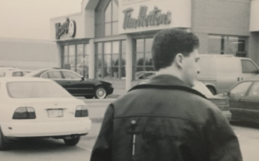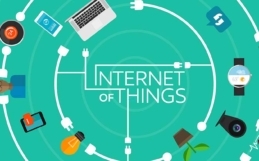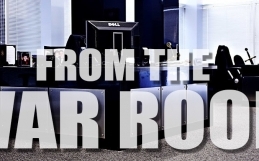VMworld 2011 kicks off today … and while Las Vegas got overrun this morning by an army of over 20,000 IT professionals, Jason and I got a preview of VMware’s state-of-the-union during today’s executive lunch with VMware CEO Paul Maritz. Here are a few interesting highlights that stuck out.
This year’s conference is their biggest yet; over 20,000 attendees, over 220 exhibitors, and hundreds of technical labs and training sessions. It’s pretty impressive when you realize that five years ago VMworld had less than 1500 attendees. One easy conclusion to draw is that VMware’s place in our industry is undeniably important. In 13 years they have earned over $10 Billion – and today Paul Maritz estimated that they will double that in the next 3 years. That’s aggressive and ambitious. It means that VMware is going to continue its assault on the competition’s market share when it comes to the endpoint devices and application infrastructure.
And so … the obvious theme for this week is the Cloud and the proliferation of mobile devices into every aspect of our lives. Here’s an interesting statistic shared by Maritz: 3 years ago, 95% of internet-connected IP addresses were for PCs. Today that number has shrunk to 50%. As such, the new challenge for stakeholders—and for CIOs in particular—is how to control those endpoint devices in a way that respects your corporate security footprint, but doesn’t strangle the freedom that tomorrow’s younger, tech-savvy, workforce demands.
One way our industry is attempting to address these challenges is to rethink the way IT services get delivered; this is precisely what makes “cloud” talk so compelling lately. The idea is to switch your focus away from strategies for controlling devices to ways of delivering applications/services to in a device-agnostic way; like a utility provider. According to Maritz, VMware is playing an important role in this transformation of IT service delivery to the “cloud”. They are focused on developing automation tools that will help organizations realize the “utility model” for corporate computing. In other words, customers and users want their IT to be like the plumbing at home; they just plug in, it just works, and no one needs to think about it (except the plumber, of course!).
It’s interesting to see Maritz (and the VMware team) spending more attention on the broader business issues that are shaping our industry. It’s also refreshing to hear him say that VMware has tough job in front of them; admitting that they much prefer to talk about speeds and feeds, bits and bytes. Now CIOs are demanding deeper conversations that are future-focused; looking at apps and org charts and asking questions about supportability. This is pulling the VMware team into uncharted and sometimes uncomfortable territory. It will be exciting to see what comes next, and to hear back from our senior consultants who are buried in this week’s technical sessions.
Stay tuned …




